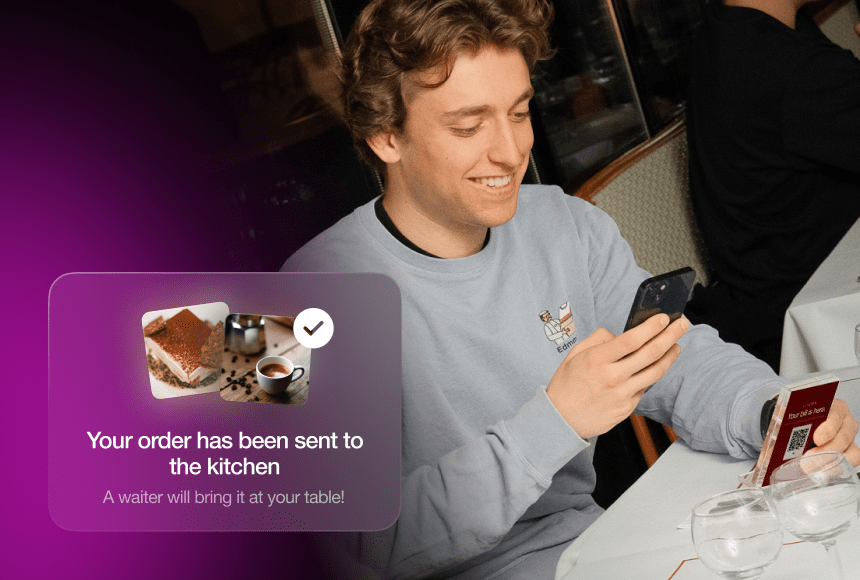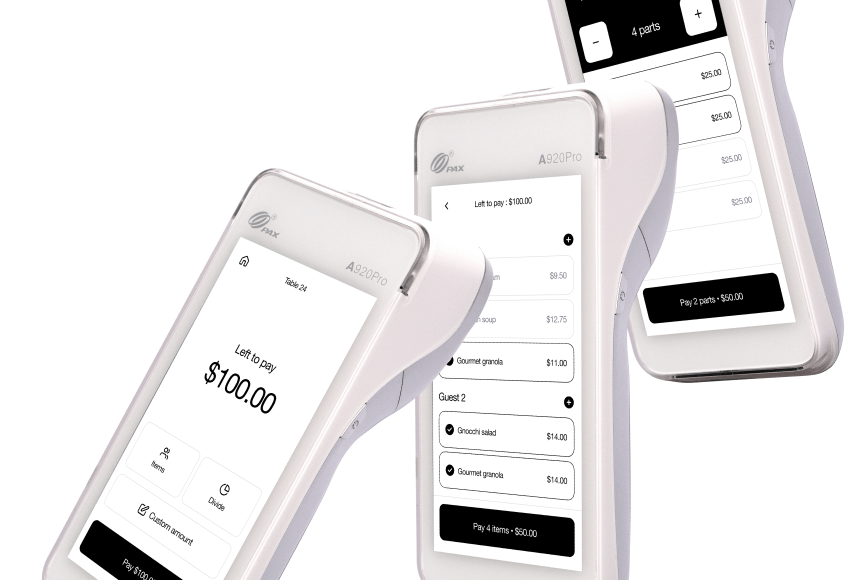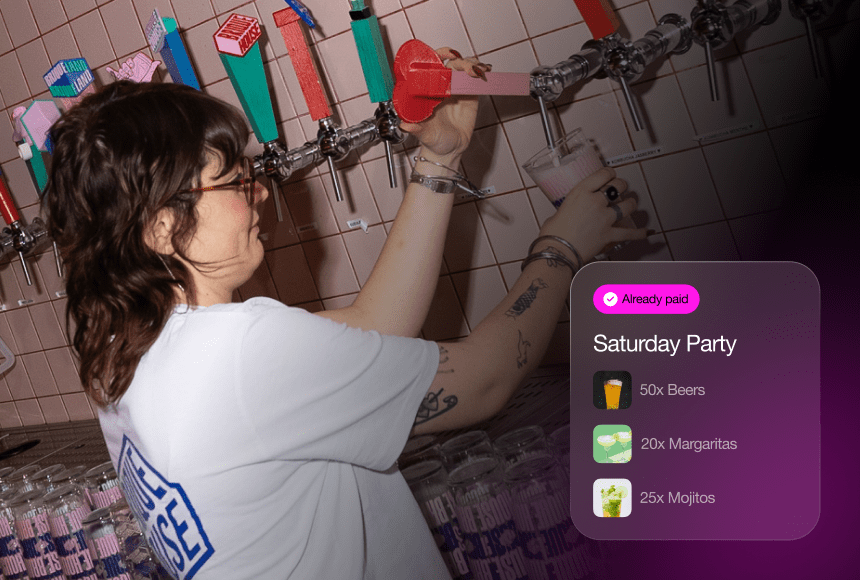
Winning Over Diners: Tackling Common Hurdles to QR Code Ordering
Why Embracing QR Codes Matters
In today’s fast-paced dining scene, more and more restaurants are introducing QR codes for menu access and ordering. It’s easy to see why: QR code ordering streamlines service, cuts down on printing costs, and allows for dynamic, up-to-date menus. According to a recent study by the National Restaurant Association, over half of U.S. restaurants have adopted some form of contactless ordering or payment—and guests increasingly expect it.
But not every diner is immediately on board. Some are less tech-savvy, others worry about data security, and a few just crave the human touch of traditional service. Understanding these objections can help you refine your approach, ensuring you don’t leave any customer behind. Here’s how to navigate common reservations and make your QR code ordering solution a hit.
1. “I’m Not Good with Technology”
One of the biggest concerns diners have is a fear of fumbling around with their phone to scan a code. For older patrons or those less comfortable with smartphones, the idea of downloading an app or using their camera to scan can feel daunting.
- Provide Clear Instructions: A brief table sign with simple, step-by-step visuals can help. For instance: “1) Open your phone’s camera, 2) Point it at the code, 3) Tap the link.” Keep it friendly and non-technical.
- Offer Assistance: Train hosts and servers to be patient guides. A quick demo or a polite “Would you like me to help you scan?” can go a long way.
- Fallback Options: Always have a couple of printed menus ready for those who truly don’t want to use the digital route.
2. “I Don’t Want to Download an App”
Many people dread the hassle of installing yet another application on their phone—especially if they’ll use it once and forget it. If your QR code ordering system demands an app download, you might lose diners right away.
- Use a Browser-Based Solution: Opt for a platform that opens directly in a web browser. Most modern smartphones have built-in QR scanning within their camera apps, removing the need for additional downloads.
- Highlight the No-App Benefit: Make it clear on the table sign or menu insert: “Scan, order, and pay—no app needed!” This alone can alleviate friction.
- Integrate Smooth Payment Tools: A service like sunday keeps the ordering and payment process within a mobile browser, so diners never need a separate install.
3. “I Miss Interacting with the Server”
A significant draw of dining out is the human aspect: friendly servers recommending dishes, answering questions, and providing hospitality. Some patrons worry that QR code ordering replaces this personal touch.
- Balance Digital and Human Elements: Emphasize that QR code menus free staff to focus on meaningful interactions—chatting about specials or ensuring top-notch service—instead of just taking orders.
- Offer Real-Time Support: If a diner wants a recommendation, servers can still step in, providing expertise. Let customers know that scanning the code doesn’t mean losing a friendly face.
- Retain Some Rituals: You can keep a brief server introduction—“Welcome! Let me know if you have any questions. Our QR menu has all the details, plus photos!”—so diners feel acknowledged and guided.
4. “It’s Too Confusing to Navigate”
If your QR code menu interface is cluttered or too complex, diners may feel overwhelmed, especially if they’re hungry or pressed for time.
- Simplify the Menu Layout: Group items logically (starters, mains, desserts, drinks). Use short, clear labels and minimal text on each screen.
- Use High-Quality Photos: Good visuals break up text and help people recognize dishes quickly. A picture can be more compelling than a 50-word description.
- Test Across Devices: Ensure your site or platform loads smoothly on various screen sizes. Glitches or slow loading times can push diners away.
5. “I’m Concerned About Security or Data Privacy”
Stories about data breaches and aggressive ad tracking make some guests wary of scanning random codes. If they’re unsure about how secure your system is, they might refuse altogether.
- Communicate Security Measures: Include a note that says “Secure connection” or “We do not store credit card data.” Transparency builds trust.
- Use Known Payment Partners: Align with reputable names like sunday or major payment gateways. Familiar logos and recognized brands reassure customers.
- Stay HTTPS-Protected: Make sure your website or ordering platform has a valid SSL certificate, reflected in the HTTPS address. Guests spot the padlock icon, which signals security.
6. “I Don’t Have a Strong Data Plan/Wi-Fi”
If your restaurant relies on a robust internet connection—either through your diners’ phone data or in-house Wi-Fi—slow speeds or zero connectivity can frustrate guests, making them blame the QR ordering system.
- Provide Reliable Wi-Fi: Invest in solid coverage for your dining area. Post the password clearly (or keep it open and secure via a splash page) so customers can connect easily.
- Offer Offline Options: Keep a small stack of physical menus on standby. If your system supports partial offline loading (like a cached menu), that can help in areas with spotty coverage.
- Monitor Connection Quality: Test your Wi-Fi frequently. If you see a surge in connectivity complaints, it’s time to upgrade your bandwidth or router placement.
7. “What If I Press the Wrong Thing?”
Touchscreen anxiety is real. Some diners worry they’ll accidentally order the wrong item or confirm something they didn’t mean to—and end up paying for it.
- Add Confirmation Steps: Have a simple “Are you sure?” prompt before finalizing an order. This second checkpoint allows diners to double-check choices.
- Clear “Edit” Buttons: Ensure each item can be easily updated, removed, or replaced with a quick tap—no complicated back-and-forth screens.
- Allow for Re-Review: Show a concise order summary right before checkout. Transparent itemization builds confidence that everything is correct.
8. “It Removes Spontaneity and Fun”
Some traditionalists argue that flipping through a paper menu and chatting with servers is part of the restaurant charm. The worry is that scanning codes might feel impersonal or overly utilitarian.
- Elevate the Digital Experience: Include chef notes, fun facts, or behind-the-scenes dish videos. Tableside ordering shouldn’t be bland—it can spark curiosity and conversation.
- Use Playful Design: Your QR menu’s look and feel can match your restaurant’s personality. If you’re a whimsical bakery, add cheerful graphics or pastel colors. An upscale bistro might opt for sleek, elegant tones.
- Encourage Real-World Interaction: Even with digital menus, servers can deliver personal tidbits or stories about new dishes. The technology simply streamlines the ordering, leaving more room for genuine conversation.
9. “I Don’t Want to Be Glued to My Phone While Dining”
Some guests worry that scanning a code means they’ll spend the entire meal on their device, missing out on the real-life social aspect.
- Keep It Quick: Remind guests that scanning and ordering only takes a moment, then they can put their phones away. Your interface should be designed for minimal screen time.
- Use Instant Checkout: The faster the payment option is, the less time diners will stay on their devices at the end of the meal. If it’s just a quick tap, they’re free to resume conversation.
- Offer a Paper Menu for Browsing: If a group wants the more traditional, leisurely approach, a few paper menus can supplement the digital system. Options help everyone stay comfortable.
10. “It Feels Like a Gimmick”
People might view QR code ordering as just another trend or a cost-cutting measure. If they sense you’re pushing technology only for the sake of novelty—or to save on printing—they might push back.
- Focus on Benefits: Emphasize how QR ordering improves accuracy, speeds up service, and provides an eco-friendly alternative (less paper waste). Show genuine value, not gimmicks.
- Involve Your Staff: Have servers mention the benefits: “You’ll see pictures of the dishes!” or “It’s easy to customize your order just the way you like it.” This positive framing helps dispel cynicism.
- Pair It with Good Hospitality: QR code systems should enhance the guest experience, not replace human warmth. Make sure diners see it as a convenience, not a cost-saving tactic.
11. “What If My Device Runs Out of Battery?”
A dead or dying phone can quickly sabotage the QR code approach. While it’s less common, it’s still a valid concern for some diners.
- Charging Stations: If possible, provide discreet phone charging options—like a couple of communal chargers or USB ports at the bar.
- Have a Backup: Again, a few paper menus on hand can rescue the situation, ensuring nobody is stuck unable to order.
- Quick Scan, Quick Exit: Designing your ordering interface for minimal clicks shortens the time spent on the device, preserving battery life.
12. “Will It Actually Be Easier than a Printed Menu?”
Some skeptics just don’t believe that scanning a code could be simpler than flipping through a physical menu.
- Highlight Time Savings: From ordering to payment, diners often appreciate the speed factor once they try it—especially during busy lunch breaks.
- Showcase Reviews and Photos: A digital menu with user reviews, detailed images, or ingredient lists can do far more than a static paper version. That added depth can win over those on the fence.
- Eliminate the Search for a Server: Emphasize the autonomy diners gain—no more waiting around to place an order or request the bill. Convenience is a compelling argument.
13. Continual Staff Training and Feedback Loops
Technology is ever-evolving, and so are customers’ needs. To maintain a smooth, fuss-free QR code experience, you’ll need ongoing staff training. Encourage employees to collect diner feedback as soon as they notice confusion or hesitation.
- Regular Check-Ins: Each week, gather your team’s thoughts on any recurring issues guests face. Updating instructions or refreshing the layout can solve problems quickly.
- Stay Agile: If many guests still struggle with scanning, rethink your signage or instructions. Don’t assume what worked at launch will stay effective forever.
- Embrace Iteration: Digital menus are flexible. Tweak categories, re-position best-selling items, or add new ways to highlight promotions whenever needed.
Turning Skeptics into Advocates
Ultimately, the success of QR code ordering hinges on how well you ease concerns and prove its worth. While some diners may initially resist or struggle, a thoughtful approach—one that blends technology with genuine hospitality—can convert skeptics into fans.
Whether it’s offering an app-free experience, maintaining a personal server connection, or ensuring security is front and center, focusing on diner comfort makes all the difference. And once customers experience the ease, speed, and modern flair of well-implemented QR code ordering, they’ll often come to prefer it. Paired with a seamless payment process like sunday, your restaurant can deliver convenience without sacrificing the warmth and charm that keeps diners coming back.
Find out more today
Drop us your details below and we’ll reach out within the next 24h



